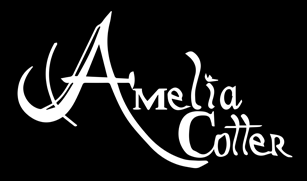Note from Amelia: April is National Poetry Month and today is International Haiku Poetry Day! Welcome Charlotte Digregorio, prolific author, haiku poet, and one of my haiku mentors:
In haiku, there is often a communion of man with nature. Haiku often evokes the wonders of nature. Actually, it doesn't have to be three lines. It is sometimes one, two, four lines or more. It is mostly imagist poetry, and it originated in Japan in the 1600s. It's written in the present tense because it captures the moment.
Punctuation is used sparingly, if at all. Haiku is usually no more than 17 syllables, but it sometimes is a lot less. There are no titles, and words aren't usually capitalized. Haiku is poetry. There are often literary devices such as alliteration and assonance, and being imagistic poetry, it evokes a gamut of emotions from happiness to sadness.
A haiku poet strives for using the fewest words possible. Adjectives and adverbs are often avoided, as they describe too much. The haiku poet wants to create an image in a very understated way, in simple language, without rhyme. The image allows the reader to formulate his/her idea of what the poem is about.
Unlike what your teacher may have taught you, in a three-line haiku, you do not need to write five syllables in the first line, seven in the second, and five in the third. In fact, modern haiku in the English language rarely follows this traditional formula.
Through well-written haiku, the reader can feel the emotion of the poet, even though the poet has written it in a very matter-of-fact way. There is no preaching to the reader, nor are there judgmental words. The beauty of haiku is in the image it evokes in each reader who takes the haiku on both its face value and its deeper level of meaning.
To offer an example, this is a published haiku that I wrote:
walking
through darkness...
trillium
The haiku above has deep spiritual overtones in just a few words. To some, it may mean that a path to faith/religion has been found. But, to others, it may simply mean walking through darkness, that is, depression, and finding one's way out.
Today, haiku and senryu–the latter, in the haiku form, but focusing on human nature, and often humorous–are popular in dozens of languages worldwide. Senryu originated in Japan in the 1700s. Often, poets do not differentiate between haiku and senryu, but consider both as just "haiku."
For many people, haiku and senryu are therapeutic, as they help us express our innermost feelings that we have difficulty articulating even to people close to us. Haiku and senryu can be written about anything relevant in our lives.
It is very gratifying to learn to appreciate the art of haiku and senryu. To write them well, poets must read them on a daily basis, and practice writing them often.
Charlotte Digregorio is the author of Haiku and Senryu: A Simple Guide for All. She blogs on haiku, and runs "The Daily Haiku" at www.charlottedigregorio.wordpress.com. "The Daily Haiku" has featured thousands of poems written by international haikuists of thirty countries.
"So What is Haiku?" copyright 2017 Charlotte Digregorio
